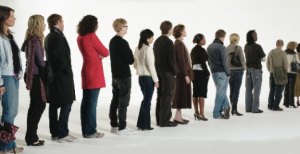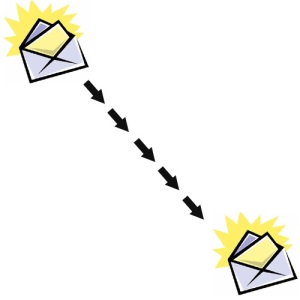
Call it the missing link, no pun intended, but after spending 2 days at Universal Studios in Orlando, and watching the mass of humanity at play, I was able to see a cross section of society that one is not afforded in the online world no matter how deep one is into it.
But one tends to think (or rather I start to think) how this crowd source spends its time online and in social networks-if at all. Yet, there were so many similarities between what occurs in an online social network and what I saw, that I just had to share 10 of them with you.
#1 What recession? With waits ranging from 2 hours to 15 minutes, The 2 theme parks we attended were not hurting for customers. $12 dollars to park and no less than $60-$75 per person to get in. Think of Universal Studios as this massive social network, and in a sense it is. But no walls and no silos. The point being- If people want it, they will pay for it and they will wait for it, they will walk miles for it, and they will suffer in the heat for it.
#2 People of all ethnic backgrounds, shapes, sizes, ages and color can some and be welcomed without judgment. Truly a melting pot, both literally and figuratively. A social network where anyone could come in and be themselves with others…Hmmm…
#3 People like to show their individuality, their uniqueness and their affinity to products, teams, people, brands, looks and passions. Their “niche” was in attendance and the park was their platform. This included tattoos, team jerseys, devotion to designers, bands and brands from head to toe, and everything in between. I could have easily segmented everyone there into specific groups, all with healthy memberships.
#4 Everyone was in a fishbowl. I watched, they watched, we watched. From people eating like pigs, parents shouting at children, couples young and old making out, people in wheelchairs, people in scooters, people who didn’t need to be in scooters, folks trying to scam to the front of lines, people not understanding directions, rules or each other, people helping each other with pictures, others letting others in front of them in lines, extreme acts of kindness and of course mean people. What’s my point? Everything and anything was there to be seen. I didn’t have to look too hard. Sound familiar?
#5 I saw zero tie in anywhere with any type of current social network-which led me to wondering…
#6 How much of this demographic was engaged online via a social network? My initial thought was less than 30% of the total attendees. They just didn’t seem to be the types. Maybe I am way off on this. I did see the potential, just based on the number of digital cameras present, that photo sharing would seem to make the most sense in tying in the activities within the theme parks into sites like Flickr or Facebook. Kodak are you reading this?
#7 Zero tie in with SMS-This was glaring and seemed to have a huge upside as well as potential for either integrating with buying food or a Fast Pass or perhaps park, ride, wait, and show information. 95% of the people there had mobile devices. How was that leveraged?
#8 Tremendous potential to make the experience better for its most important asset, the people that shell out hundreds of dollars per day to attend. It can be even better but I think a certain aspect of smugness permeates the overall park experience for the sake of printing money. In other words, “We have a hot property, so though the experience could be better, we don’t need to really worry about it…”
#9 Some attractions had zero intuitiveness and thus getting lost even with the map was an issue. Directions were an issue. Assumptions in the capabilities of the attendees were perhaps over estimated. Hard to change? hard to upgrade? Hard to improve upon?
#10 Technology played a part in the design of each and every ride there to enhance the experience and the destination, but technology could be used even more effectively to enhance the journey all along the way.
My thoughts are this. What makes online social networks work is the individuality, yet the common thread that all people possess. This is obviously the key, or can be the key offline too. The struggle in both scenarios for marketers is trying to tap into that. The struggle for managers is how to deftly address the wants, needs and desires of every segment. The key might be right in the middle of the crowd. The crowd…It’ s in the crowd.
Note* Perhaps one way for us to reduce healthcare costs might be for Universal Studios to quit serving up the Western Diet to so many who obviously indulge in this far too often. More than 40% if not more who were at the park, were overweight..





















